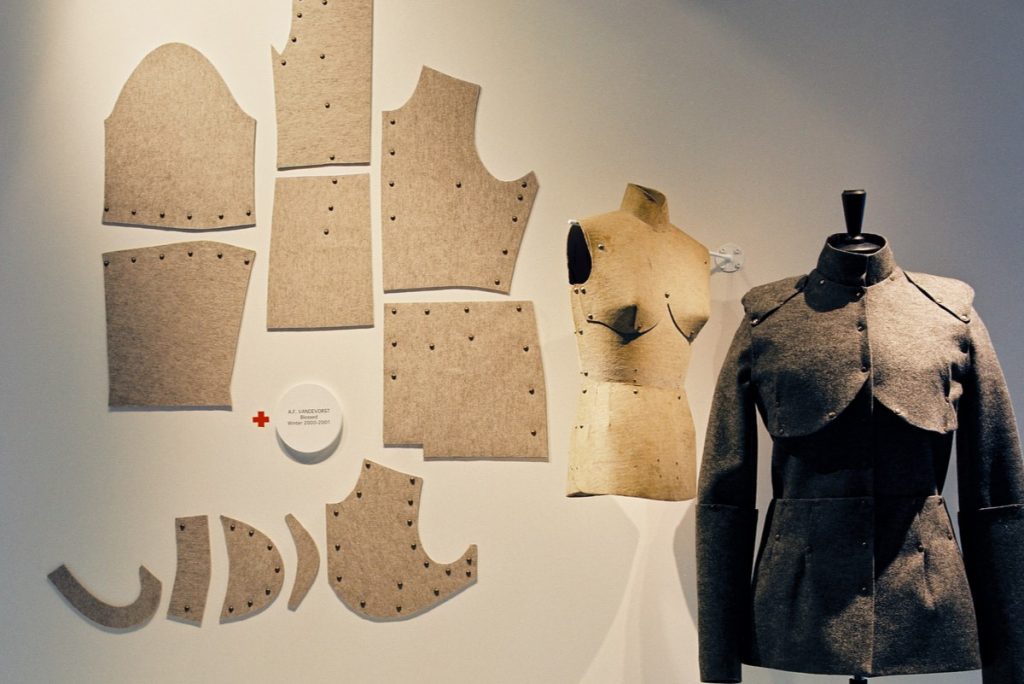Patronen: Patterns
The pattern is traditionally seen as a technical drawing and therefore, in a museum context, only interesting for research or study. With regard to both purchasing and exhibition policies, fashion museums focus mainly on the end product – the garment – and in so doing rarely exhibit the pattern, let alone acquire or purchase it. “Patterns” aims to explore both the technical and the artistic and cultural philosophy aspects of a clothing pattern.
Clothing is made for a body and plays an extremely important role in the body images that characterize a particular period. This body naturally does not appear in the museum setting. Fashion museums use mannequin dummies in an attempt to create an illusion of the body that is as realistic as possible. However, by doing this the museum creates an artefact, a contrived form of presentation which at best makes reference to what fashion is and can be. But how does one prevent a fashion museum from becoming a mausoleum, a nostalgic place which can only present fashion as a dead material? How does one introduce ‘movement’ into an exhibition policy?
The MoMu also uses dummies and mannequins to present its clothing, but at the same time attempts to examine whether the body can be introduced in to the museum setting in various ways. Technically speaking, the pattern is the 2-dimensional transition between the 3-dimensional body and the final item of clothing. Each pattern carries a potential item of clothing in it and therefore, indirectly, a potential body too. The scenography created by Bob Verhelst visualizes the interaction between pattern, body and garment.
In addition to this, Patterns also includes an exhibition of photographs by the artist Nicole Tran Ba Vang. In her work, body and clothing come together and create an alienating silhouette. Here, the body is represented as the ultimate place of creation and the final result also reveals the paradox and impossibility of this. The exhibition is accompanied by a sound design by Senjan Janssen. These soundscapes also form a part of “Blindspots”, a programme for the blind and the partially sighted.
The exhibition features designs by Haider Ackermann, Azzedine Alaïa, Balenciaga, Véronique Branquinho, Pierre Cardin, Hussein Chalayan, Courrèges, Ann Demeulemeester, Dior Haute Couture, Sevin Doering, Angelo Figus, Jean-Paul Gaultier, Romeo Gigli, Hubert de Givenchy, Christian Lacroix, Martin Margiela, Issey Miyake, Josephus Thimister, Walter Van Beirendonck, Dirk Van Saene, A.F. Vandevorst, Patrick Van Ommeslaeghe, Madeleine Vionnet, Vivienne Westwood, Yohji Yamamoto, and Yves Saint Laurent.
Exhibition under the lead of
Curator: Kaat Debo | Scenographer: Bob Verhelst
Image © MoMu Modemuseum Antwerp, foto Koen de Waal
